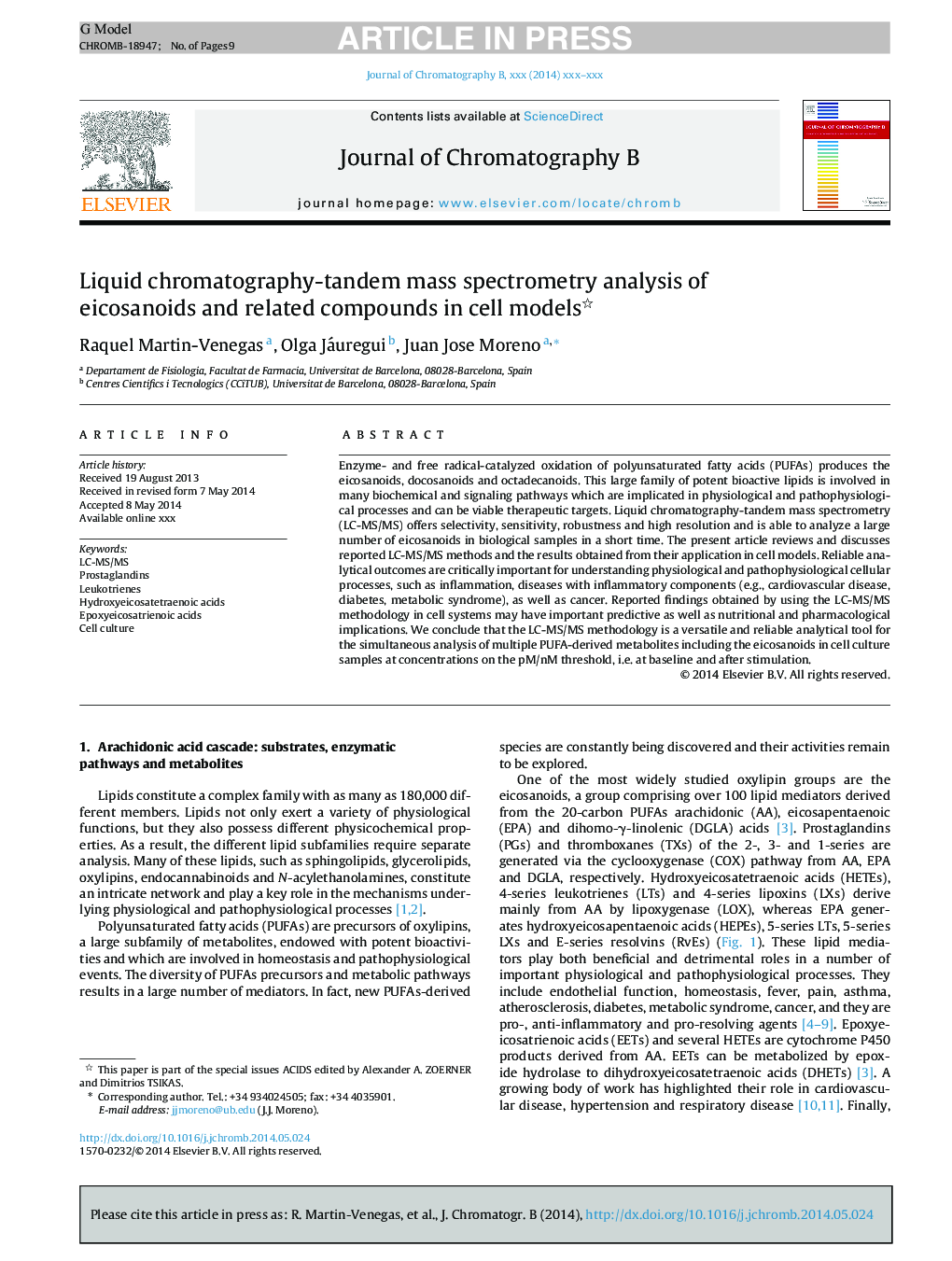| Article ID | Journal | Published Year | Pages | File Type |
|---|---|---|---|---|
| 7617659 | Journal of Chromatography B | 2014 | 9 Pages |
Abstract
Enzyme- and free radical-catalyzed oxidation of polyunsaturated fatty acids (PUFAs) produces the eicosanoids, docosanoids and octadecanoids. This large family of potent bioactive lipids is involved in many biochemical and signaling pathways which are implicated in physiological and pathophysiological processes and can be viable therapeutic targets. Liquid chromatography-tandem mass spectrometry (LC-MS/MS) offers selectivity, sensitivity, robustness and high resolution and is able to analyze a large number of eicosanoids in biological samples in a short time. The present article reviews and discusses reported LC-MS/MS methods and the results obtained from their application in cell models. Reliable analytical outcomes are critically important for understanding physiological and pathophysiological cellular processes, such as inflammation, diseases with inflammatory components (e.g., cardiovascular disease, diabetes, metabolic syndrome), as well as cancer. Reported findings obtained by using the LC-MS/MS methodology in cell systems may have important predictive as well as nutritional and pharmacological implications. We conclude that the LC-MS/MS methodology is a versatile and reliable analytical tool for the simultaneous analysis of multiple PUFA-derived metabolites including the eicosanoids in cell culture samples at concentrations on the pM/nM threshold, i.e. at baseline and after stimulation.
Keywords
Related Topics
Physical Sciences and Engineering
Chemistry
Analytical Chemistry
Authors
Raquel Martin-Venegas, Olga Jáuregui, Juan Jose Moreno,
